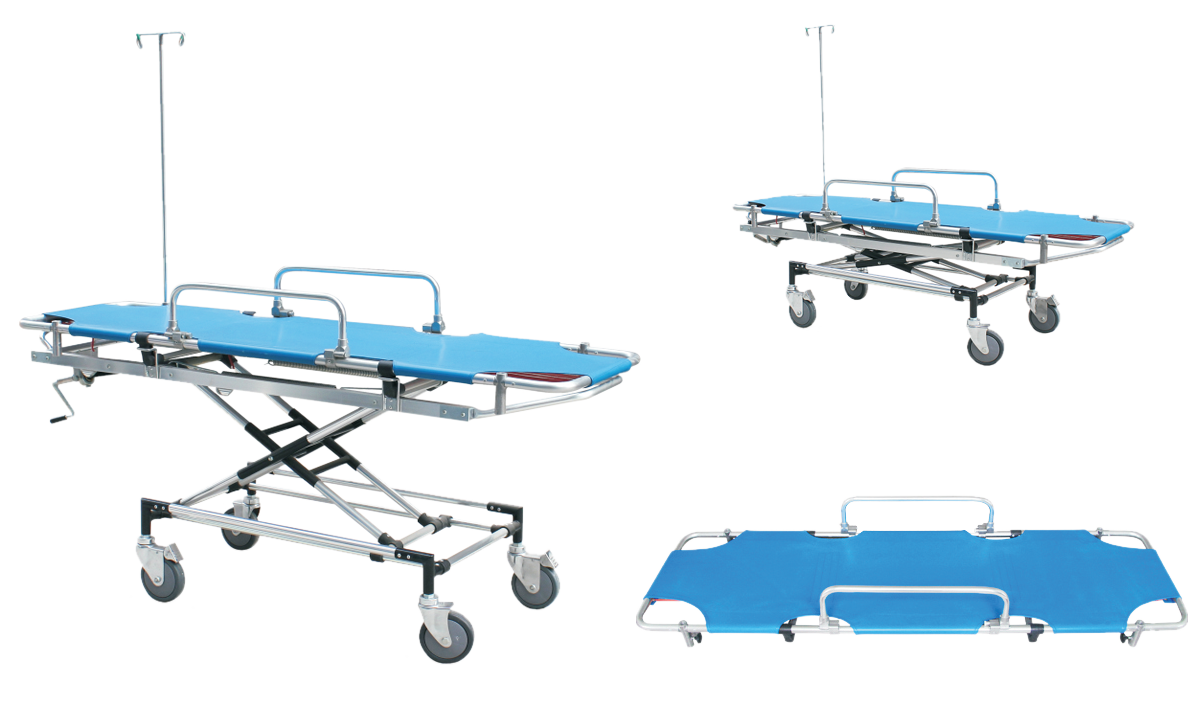
Do you work with medical or emergency personnel, or want to protect yourselves from emergencies? Find out all about our aluminum rescue bed for ambulances at Nexgenmedical.com!
| Ref. No.: | Product Size: ( L xWxH) Highest |
Product Size: ( L xWxH) Lowest |
Capability: | G. W. : | Self Weight : | Qty Cs. : | Package Size: |
|---|---|---|---|---|---|---|---|
| NMW8120 | 190 x 55 x 88 cm | 190 x 55 x 50 cm | 159kg | 35kg | 31kg | 1PC | 194 x 63 x 33 cm |
Looking for an aluminum rescue bed for your ambulance? Look no further than Nexgenmedical.com! We carry a wide selection of aluminum rescue beds, perfect for any ambulance. Browse our selection and find the perfect bed for your needs!
If you're in the market for a new ambulance, you'll be happy to know that Nexgen Medical now offers an aluminum rescue bed. This high-quality bed is perfect for ambulances and other emergency vehicles, as it is durable and easy to clean. Plus, it comes with an integrated patient restraint system, so you can be sure your patients are safe and secure during transport. If you're looking for a top-quality ambulance bed that will withstand the rigors of daily use, look no further than the aluminum rescue bed from Nexgen Medical. Order yours today and rest easy knowing your patients are in good hands.
The aluminum rescue bed from Nexgenmedical.com is designed with safety in mind. The bed is made of durable aluminum that can support up to 1,500 lbs. The bed also features a built-in patient restraints system that helps keep patients secure during transport. In addition, the bed comes with a headboard and footboard to help protect patients from injury.
Nexgenmedical.com now offers an aluminum rescue bed that offers many benefits over wood or steel stretchers. First and foremost, aluminum is much lighter in weight than either wood or steel, making it easier for emergency personnel to lift and transport patients. Additionally, aluminum is more durable than wood and will not rust like steel, making it ideal for use in wet or humid environments. The aluminum rescue bed also features a built-in patient lift system that allows emergency personnel to quickly and easily move patients from the ground onto the stretcher. This is a vital feature in any ambulance as it can help speed up the process of getting patients into the ambulance and on their way to the hospital. So if you're looking for a new stretcher for your ambulance, be sure to check out the aluminum rescue bed on Nexgenmedical.com!
If you're an ambulance service looking to convert or replace your current stretcher with an aluminum rescue bed, Nexgenmedical.com is the place to go. We offer a variety of aluminum rescue beds that are perfect for any ambulance service. Our aluminum rescue beds are made from high-strength aluminum alloy that can withstand up to 1,000 lbs of weight. They're also fully welded and powder-coated for durability and corrosion resistance. Plus, they come with a 5-year warranty so you can be confident in your purchase. We understand that choosing the right ambulance stretcher is a big decision. That's why we offer a free consultation with one of our experts. We'll help you choose the best aluminum rescue bed for your specific needs and budget. So what are you waiting for? Contact us today and let us help you make the switch to an aluminum rescue bed.